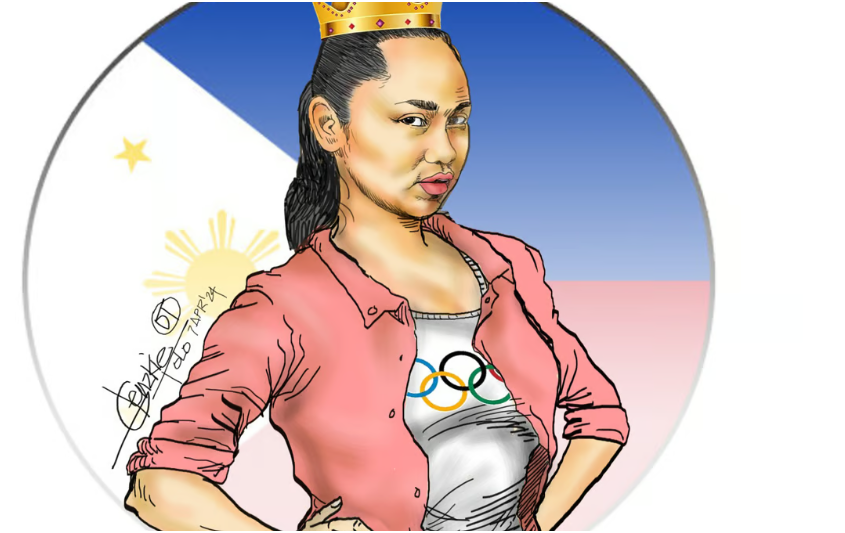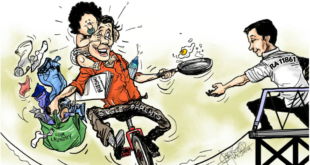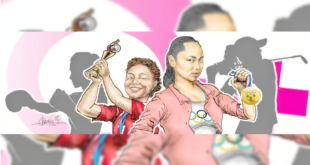In their 97 years of participation in the Summer Games, Filipinos had never reaped Olympic gold — until Diaz made that final powerful clean and jerk.

The inevitable finally happened — Hidilyn Diaz failed to qualify for the Paris Olympics.
But that doesn’t mean her legacy has been tarnished.
There is no doubt that Diaz is a modern-day hero, an inspiration to millions of young Filipino athletes looking to sports as their ticket out of poverty.
She grew up in the poor barangay of Mampang in Zamboanga City and had to help her parents make ends meet by selling vegetables and fish, and washing cars.
They were so poor that she learned to lift weights using wood cut from ipil-ipil trees. Later, she managed to get barbells made of cement and it took a while before she got iron ones.
Her first big break came in 2003 when she competed in the Batang Pinoy and the Mindanao Friendship Games. The following year, she was recruited by the Samahang Weightlifting ng Pilipinas and moved to Manila for more formal training.
She was just 16 when she competed in her first major international event — the 24th Southeast Asian Games in Nakhon Ratchasima in 2007.
The following year, she qualified for the Beijing Olympics, which did not go so well, but it did set the stage for her eventual successful career that would earn her the love and respect of her countrymen.
In fact, her first two Olympic stints were forgettable.
In Beijing, she finished 10th in a 12-woman field, while in the London Games in 2012, she posted a DNF (did not finish).
Although the setbacks were heart-crushing, Diaz never lost hope but worked harder until she finally landed on the medal podium in the Rio de Janeiro Olympics in 2016, becoming the first Filipino to win an Olympic silver medal since Mansueto “Onyok” Velasco in Atlanta in 1996.
And the silver medal only made Diaz hungrier.
When the coronavirus pandemic broke out, Diaz, her Chinese coach Kaiwen Gao, and trainer Julius Naranjo got stranded in an apartment in Kuala Lumpur.
With the entire city on lockdown, Diaz had to be creative, training with bamboo poles, water bottles, her luggage, and whatever heavy item was available to serve as improvised weightlifting equipment.
A few months later, she relocated to Jasin, Malacca, where she trained in a makeshift gym in a backyard while missing the company of her friends and family back in the Philippines.
But her spirit would not be broken.
Diaz marched to the Tokyo Olympics in 2020, brimming with confidence. She beat Chinese powerhouse Liao Qiuyun for the gold medal in the women’s 55-kilogram division, using not only her strength but also her mind and willpower to win.
Her victory sparked a celebration back home.
In their 97 years of participation in the Summer Games, Filipinos had never reaped Olympic gold — until Diaz made that final powerful clean and jerk that completely changed the course of Philippine sports history.
Despite her newfound stardom, Diaz remained grounded.
She married Naranjo and opened the HD Weightlifting Academy in Jala-Jala town in Rizal. She was elected to the Athletes Commission of the International Weightlifting Federation, giving her another avenue to help other athletes.
Although her lifestyle isn’t as lavish as other Olympic gold medalists in some First World countries, she’s still enjoying it as she spends most of her time training and motivating underprivileged children who are all dreaming of becoming the next Hidilyn Diaz.
Yes, Diaz may have lost her chance at another Olympic gold medal, but in the eyes of her countrymen, especially the young athletes, she will forever be a queen, a hero of Philippine sports.
*****
Credit belongs to: tribune.net.ph
 Atin Ito First Filipino Community Newspaper in Ontario
Atin Ito First Filipino Community Newspaper in Ontario






